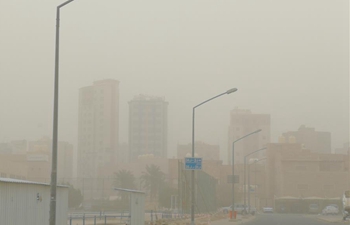WASHINGTON, May 10 (Xinhua) -- A study published Thursday in the journal Cell revealed that a respiratory structure used by microbes from marine volcanic vents bore many similarities with that used by modern-day humans.
The near-atomic resolution images of MBH, a molecular complex involved in microbial respiration, have shown that MBH's structure is remarkably similar to its counterpart in humans, Complex I.
The findings provide evidence how a molecular mechanism has adapted to changing environmental conditions over billions of years.
Almost all life on Earth relies on respiration, which converts electrical energy into a usable, chemical form, according to scientists at Van Andel Research Institute (VARI) of University of Georgia (UGA) and Washington State University who conducted the study.
"Nature is really good at finding molecules that work and then modifying them and using them over and over again," said Michael W. W. Adams, a UGA Distinguished Research and Georgia Power Professor. "Knowing the structure of MBH provides us with new insights into how Complex I evolved and how it might work."
"The determination of MBH's structure fills in some important missing pieces that reveal how life adjusted to sweeping changes in the environment throughout the millennia," said Li Huilin, a professor in VARI's Center for Epigenetics and co-senior author on the study.
MBH is regarded as an ancient respiratory system because it was isolated from Pyrococcus furiosus, a microbe that grows best in boiling water and that for billions of years has made its home in volcanic marine vents.
This inhospitable environment, with its noxious mix of gases and extreme temperatures, is akin to the atmospheric conditions present on a much younger, much more volatile planet.
Despite similarities, MBH's structure illustrates a mechanism for transducing electrical energy into chemical energy that is simpler than that in Complex I.
Complex I has several extra loops that allow it to interact with more molecules than MBH, an adaptation that likely arose along with a shift in Earth's atmospheric makeup.
The differences also are reflected in their metabolisms. Humans inhale oxygen and exhale carbon dioxide, a conversion helped along by Complex I, while P. furiosus uses MBH to expel hydrogen gas.
It may possibly open up the potential for its use as a source of clean energy, according to the study.

















